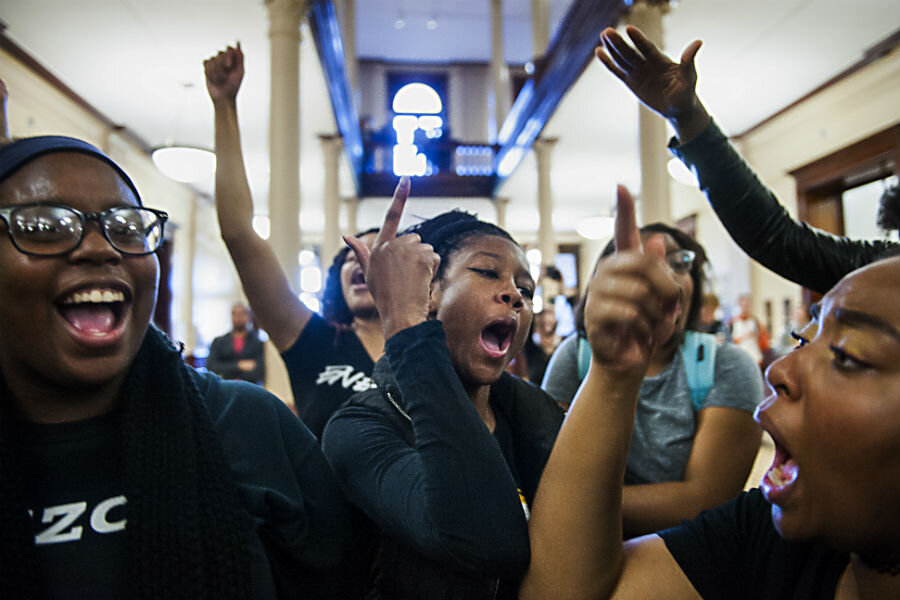Mizzou 10 percent goal: Why are black college professors so rare?
Loading...
When University of Missouri System President Timothy Wolfe resigned on Nov. 9, it was over protests that the Mizzou campus is mired in racial bias. And by the measure of black professors on campus, they have a case.
The University's new interim president, Mike Middleton, who is African American, is a retired professor known for trying to cultivate diversity during his tenure as deputy chancellor. But protesters say that Mr. Middleton is an exception, not the rule — a black administrator and faculty member on a campus where just 3.2 percent of tenure-track professors are black — and that needs to change. They're asking that the University raise that number to 10 percent by 2017-18.
The demand highlights a systemic problem across not just Missouri, but the nation's colleges and universities: Roughly 5 percent of faculty are black, whereas 12 percent of students are. At the current rate of hiring, The Journal of Blacks in Higher Education estimated it could take 140 years for the percentage of black faculty to come even with African-Americans' overall representation in the work force.
Students and many academics say bringing those numbers up isn't just for statistics' sake, or even justice; it's also a matter of learning and mentorship.
"Studies show that students normally do better if they're taught by people that can relate to them, not only economically or socially, but racially because naturally we face similar struggles, being adults, students, staff," State University of New York at Buffalo student Deidree Golbourne, 20, told the Associated Press.
Some of the disparity between the number of black undergraduates and faculty may exist precisely because students don't see professors who look like them in front of the classroom, diminishing their ability to see themselves in those shoes one day, and pursue a PhD.
"At the root of it is not just encouraging but ensuring that high school students and undergraduate students are aware of that as a career path," said Beth Olivares, dean for diversity initiatives at the University of Rochester. "Many students are not."
Even for those who are, the time and money that goes into an advanced degree may hit many black graduates harder than their white peers. And young black professors are more likely to wind up in dead-end adjunct positions, which more and more colleges are adopting as a cost-saving measure.
But two reports from the Journal of Blacks in Higher Education highlight that, although progress is still "a drop in the bucket," many schools, particularly small liberal arts colleges, are making important headway.
Despite their often rural locations and relative isolation, the Journal notes that 11 of the top 24 liberal arts colleges have at least a 5 percent-black faculty, versus just 3 out of 28 leading universities.
The studies suggest that black faculty may be drawn to small schools' focus on humanities and social sciences, which typically attract more black students than sciences and engineering, but also the emphasis on teaching, rather than a publish-or-perish attitude that leaves many professors elsewhere more concerned about their research than their students.
Not only does that improve students' in-class learning, but it often leads to more supportive student-teacher relationships.
Among the top schools for hiring black faculty were Mount Holyoke College, with nearly 10 percent; Haverford College, with 8.6; and nearby Swarthmore College, with 7 percent.
This report includes material from the Associated Press.








